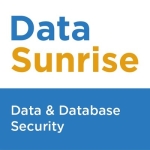WAF is a great security layer to protect an organization from a wide spectrum of application attacks residing in OSI layer 7. The Imperva device relies on signature-based policies, as well as on a web correlation engine. In addition, the packet inspection can be enhanced with the aid of stream signature policies, which are policy items focused on the stream rather than the HTTP/HTTPS protocol. Imperva can easily match a web user to the requests launched from his client. While the default policy subset is very rich and covers different regulations (e.g., PCI, SOX), there is always an option to create custom policies addressing specific needs. Security alerts are comprehensive of all the necessary details for the analysis, such as connection details, signature triggered, alert type (e.g., Protocol, Profile), severity and followed action (e.g., syslog forward, IP monitoring).
DAM also provides great value to audits and again, the data monitoring policies by default are very rich.
If you don't know exactly what kind of data you store in-house, SecureSphere allows you to actively scan and classify your information, automatically providing you detailed status of the data, which can be further reviewed and finalised by analysts or DBAs. This is also valid for user rights on the data, understanding the level of privileges granted to users and suggesting countermeasures in detailed aggregated charts and reports.
Once under monitoring, the data can be reviewed with an intuitive interface that allows the analyst to drill down, quickly narrowing the scope in a few clicks and focusing the attention only on the relevant queries. Once the pattern is identified, it is even possible to quickly report a detailed status of the findings, as well as generate a report template for future uses. This is on the hot data, what we have available in the management database. The time span can be increased indeterminately with a good retention configuration, combined with a SAN that stores the cold data, partitioned in daily slices and ready to be loaded into a separate database space for archives.
This is brilliant if you think about scalability, for you can obtain a very big archive while preserving system resources and performance. However, to get this configuration, in-depth tuning is needed for several weeks in order to get all relevant metrics (e.g. data stored per day, data spikes, backup speed, link transfer capacity, etc.) and adopt the appropriate customizations.
Audit data can also be correlated with application users by obtaining a detailed match of the database queries executed according to a particular web user’s HTTP requests.
The FAM module allows organizations to continuously audit storages and network shares and keep a detailed record of every file operation across the company. Scans are available also in this context, providing user rights as well as access to the monitored files. A data classification is also possible with the FAM.
All of Imperva’s features are extremely powerful, while a certain degree of knowledge is required to have a solid understanding of the product.
Imperva helps you comply with data regulations such as SOX or PCI. It helps SOC analysts to enlarge the scope analysis, significantly providing great procedures to drill down into the audit or a customizable enrichment fed by several types of input, e.g. Active Directory or other external platforms, and even a layer 7 inspection. When fully integrated, the application user requests are bound with the queries executed, giving a comprehensive picture of how your web application interacts with the data layer highlighting all possible security flaws in the data management, code bugs or server misconfigurations. All this logical data collection is effectively arranged into detailed profiles from where it is possible to spot the unusual deviations or to create advanced conditions to trigger upon this baseline. Think about access to PCI data from users different to the ones allowed, such as DBAs, only from a certain subnet, let's say the external network, out of the business hours, like nights or weekends. This is one possibility of what Imperva can achieve in your organization to protect the data from unauthorised users.
To have the mind at ease with a security solution has been always a chimera. Even SecureSphere suffers from some limitations, which I believe will be handled in the near future. I see two main things to improve at this point:
- SSL tunnel support for z/OS agents
- Capability to retain live audit policy data for several months; sometimes, on certain installations, this is not feasible due to the big data streams involved in the scope.
I've been supporting the Imperva technology since version 8.x. I have a company that provides consultancy services and I support Imperva.
From versions 9.5 and later, the Imperva solution has reached an optimum level of stability. On every unusual state reported, I was always able to relate it to misconfigurations or other hardware limitations and never to major bugs or software problems.
Again, Imperva works great when you need to increase managed devices, add new gateways or even change the operational modes of the latter.
On a scale from 1-10 (1=worst, 10=best) I would say technical support is 9. Support is always guaranteed and every internal SE has been always competent and ready to assist.
I tested different audit and WAF solutions and the one I was always more comfortable with is Imperva.
Setup is actually complex due to the nature of the product and needs deep knowledge of the solution to get things working with minor effort. If you don't know exactly what kind of solution are you deploying or even the installation steps to get the environment fully working, you won't be able to install it easily.
I am a technician, so I am not very confident discussing this topic.
Doing the initial Imperva training before putting your hands on the product helps a lot. Getting assistance from Imperva during the initial stage of your new environment is highly recommended.










Hi Sudarshan, I am no longer at Imperva, but I agree with you that the legacy console works well, but the UI is dated by today's standard. When I left in the Spring of 2017 there was an R&D project for a new centralized server that would take over some of the legacy console's functionality and add some of the modern elements teams are looking for. It might be worth asking your account manager for a roadmap presentation.